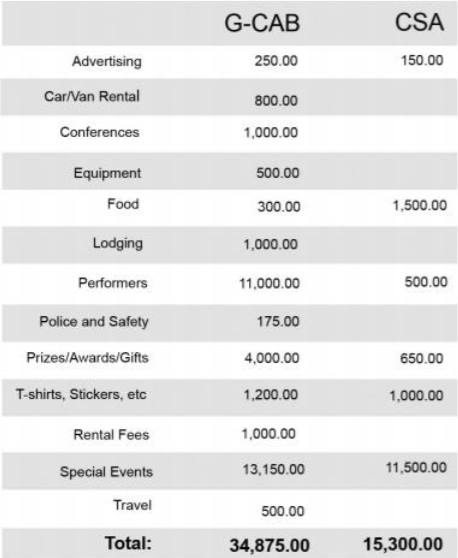By: Jess Ward, Staff Writer
Every semester, college students everywhere take on the task of paying their school bills. Between tuition, housing, meal plans and transportation, students are 31 percent more likely to require loans than they were in 2007, according to USA Today. Despite financial aid packages and scholarships, students are often left burdened with debt. Harvard University conducted a study on student debt, and found that 42 percent of millennials are impacted by student loans, along with 58 percent of all college graduates.
Each cost created by a university affects its students, however, these fees may seem ambiguous in their purpose, leaving students unaware of where their money is being spent.
USM’s bill features one such item, called the Student Activity Fee. The fee is determined by the program and the amount of credits the student is enrolled in, with full-time students at the Gorham and Portland campuses paying the most at $55 per semester. The USM website describes the fee as helping to “support various educational, cultural, and social activities.”
The fee itself is used to fund student organizations and events both on and off campus. However, the website does not specify what process is used to determine the allocation of the funds, or what administrative office is responsible for overseeing its use.
Jeffrey Ahlquist, Student Senate Treasurer, says the Activity Fee is controlled by the Student Senate, which distributes the funds to student groups and entities at USM.
“We don’t have a say in whether or not it gets raised,” he says, “That’s all stuff that’s done by the University itself.” However, other than altering the specific cost of the fee, Ahlquist says the University can do little to control where the money is spent.
Entities, such as the Board of Student Organizations (BSO) and the Gorham Campus Activities Board (GCAB), oversee various groups on campus. Ahlquist clarifies that “There’s a difference between student groups and the student government entities… [entities] get their budget directly from us, and then they get to decide what to spend it on.” Student groups not overseen by entities, on the other hand, submit their budgets directly to the Senate.
FoA budget must be submitted and voted on by the senators after a student representative makes a case for their request at a formal meeting. Entities that run various groups and are raising money for a specific event may also submit these requests, as GCAB did this October for its upcoming National Association for Campus Activities Conference.
Ahlquist explained that there are rules in place to insure that the money is spent well.
“Constitutionally, if a student group wants money they can take up to $250 per person, provided that they fundraise 20 percent of the cost” he said.“You have to have some sort of investment in it in order for us to give money.”
Ahlquist estimates that the total Activity Fee amounts to approximately $400,000. Not including stipends, this year’s current budget has allocated a total of $310,000 between the Business Office, the Executive Branch, the Senate, and the five student entities on campus, as shown in the budget spreadsheet. An additional $45,000 is classified as ‘unallocated,’ which is reserved for the individual group appeals.
During election cycles, in which students run for senate positions and polls are conducted, Ahlquist says that he tries to hear the students’ opinion on the Activity Fee.
“We can get a rough idea from students, by putting up polls during the election season we have,” Ahlquist explained. “Last year we asked the question ‘would you be interested in raising your student activity fee ‘x’ amount of dollars, if it meant you didn’t have to pay directly for printing?’” These polls are intended to shed light on the needs of the student body, as to insure that funds are allocated according to those needs.
However, Ahlquist said they are mostly unsuccessful in garnering attention from students and that “not a lot of people vote in our elections… last year during the cycle, I think it was less than 300.”
This suggests that the students who supply the Activity Fee each year are not giving input effectively, and Ahlquist is not sure how to fix that. He expresses a desire for increased student involvement, but as of now does not have a particular plan to make that happen.
“If we had more testimonials from students who use our resources, I think that would incite students to come forward,” says Ahlquist.
Students who are interested in proposing projects on campus, or are interested in hosting events, can find resources on the Senate website. After filling out the necessary forms, students may submit them for approval and advocate for their ideas before the Senate.

